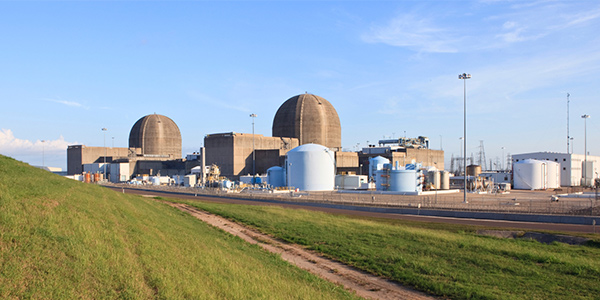
BH bills this as a “TOTAL SOLUTION” to the tragedy this winter in Texas.
Spearing Fish in the Barrel
Let’s look at this tragedy with the ERCOT data in this graphic.[1] Looking at the load shed line you can see that from about 5 a.m. on Feb. 15 to about 8 p.m. on Feb. 17, BH’s 10 GW would not have alleviated load shed. So the energy price in ERCOT would have been $9,000/MWh for those 63 hours at a cost of $28.35 billion.[2] How is that a “TOTAL SOLUTION?” Or any solution?
Wait, there’s more. BH’s slide deck claims that its $8.3 billion proposal has a “Lifetime Cost of Solution” of $3.55 billion. How can a project costing $8.3 billion have a lifetime cost of $3.55 billion?

Berkshire Hathaway Energy’s proposal to supply 10 GW of emergency generation to ERCOT would not have been enough to prevent load shedding on Feb. 15-18, when unserved load approached 20 GW. (See area shaded gray.) | ERCOT
Another of my favorites: BH says it will provide “a $4 billion performance guarantee.” Hmm. Let’s say I give you $8.3 billion for an insurance package and if you fail to meet your obligation you give me $4 billion. Such a deal.
BH claims that its proposal costs less than winterizing existing assets. But think about that. The BH assets presumably would need to be winterized — otherwise what are we doing here? Would the incremental winterizing cost for 10 GW of existing facilities cost many billions more than the incremental winterizing cost for 10 GW of new facilities? If not, why spend $8.3 billion on new facilities?
Let’s take an example of South Texas Nuclear Unit 1, which tripped off the early morning of Feb. 15 and didn’t start to return to service until late Feb. 17. The cause of the outage was reported to be freezing of a pressure sensor line that caused water pumps to trip.[3] Winterizing such equipment, as is done elsewhere, would have cost a pittance and would have provided equivalent capacity value to 1.3 GW of BH’s proposal — for which BH proposes to charge $1.1 billion.[4]

The South Texas nuclear plant suffered an outage from Feb. 15 to 17 because of a frozen pressure sensor line, which caused water pumps to trip. | NRG
Low-hanging Fruit
Texas should pick some low-hanging fruit before ever throwing $8.3 billion at BH. Some modest proposals:
- Make sure electric utilities don’t curtail critical gas infrastructure.[5]
- Don’t allow maintenance outages during the peak winter season.
- Make utility curtailment more granular so that empty office buildings aren’t blazing because there’s a fire station on the same distribution circuit.
- Use effective, broad communication to customers, like the Emergency Broadcast System, to request voluntary conservation and to let customers know what to expect.[6]
- Require appropriate winterization of gas and electric facilities. I gave above the example of South Texas Nuclear Unit 1 tripping, which cost NRG, operator and 44% owner of the plant, about $374 million of foregone revenue.[7] But somehow that kind of money wasn’t sufficient incentive for NRG to winterize such equipment. Perhaps that’s because foregone revenue doesn’t appear in financial reporting.[8] But whatever the explanation, this can’t be allowed to happen again.
- Where dual-fuel capability (like diesel or LNG) makes sense, add it to existing generation. That saves the entire cost of new generation. If Texas decides it wants to fund, say, 10 GW of that, it could have generators bid in a descending clock auction to add it. Not rocket science.[9]
Again, I wish the best to Texas in recovering from this tragedy and in avoiding another one.
[1] http://www.ercot.com/content/wcm/key_documents_lists/225373/2.2_REVISED_ERCOT_Presentation.pdf (slide 15).
[2] The math is $9,000/MWh paid to about 50,000 MW for 63 hours.
[4] The math is $8.3 billion divided by 10 GW times the 1.312 GW of South Texas Nuclear Unit 1.
[5] Since I first wrote about this, an excellent story on the subject has appeared in the Texas Tribune. https://www.texastribune.org/2021/03/18/texas-winter-storm-blackouts-paperwork/.
[6] This system is reported to be able to reach 225 million Americans. https://www.washingtonpost.com/technology/2018/10/03/millions-cellphone-users-are-about-get-presidential-alert-heres-what-know/. BTW, don’t use Twitter — less than 1% of Texas consumers follow ERCOT or their electric utility on Twitter.
[7] NRG owns 44% of Unit 1, so the math on foregone revenue is the unit’s 1,312 MW times 44% times $9,000/MWh times the 72 hours the unit was out.
[8] Interestingly, NRG has had two Wall Street conference calls since the tragedy and got exactly zero questions about the nuclear plant outage and the foregone revenue involved.



